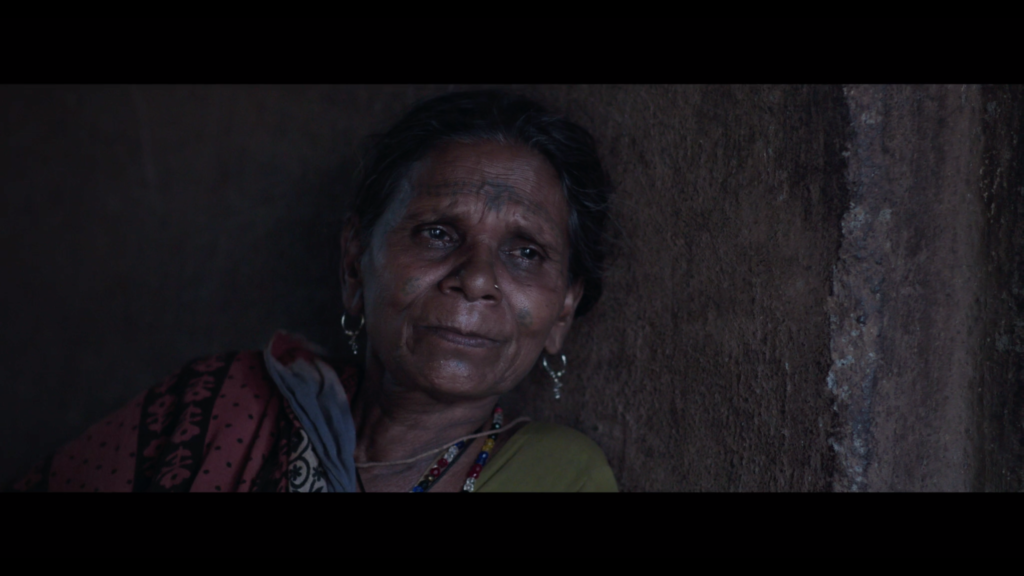
Sachin Dheeraj Mudigonda’s short film „Testimony of Ana“ tells us the story of an elderly woman who was accused of being a witch. Although being a short film, it is both, intense and meaningful. In particular, an Adivasi elder accused of witchcraft by her neighbours in rural India uses faith and perseverance to survive several monstrous attacks. Living in an area beset by widespread logging, her refusal to be driven off the land sets up a conflict deeply rooted in patriarchy and capitalism waged on women’s bodies—the witch-hunt. We had the opportunity to talk to the director Sachin Mudigonda.
Dear Sachin. We hope that you are safe and somehow managing to navigate through extremely tough and sad times India is currently facing due to the Covid-19 pandemic. Your short film „Testimony of Ana“ thematizes a modern witch hunt in India. It is the fact that it is a critical view on the fate of the Adivasis, particularly Adivasi women in India. What is your short film all about?
Thank you for asking, Bijon. Yes, it has been a tremendously difficult time for everyone. I am currently living in the USA and it has been worse because my parents are back in India. So there is this utter helplessness that you go through. But I really hope there is light at the end of this darkness.
My short film is about Anaben Pawar, an elderly Adivasi woman in rural India accused of witchcraft. We look at how this accusation has caused a profound void in her life. We also look at her strength and perseverance to live and resist her oppressors.
This sounds like a real story.
Yes, the incident happened in 2017!
The Adivasi situation is a socio-political topic. What is the current state in India and how did you get involved to do such a film?
The current situation in India is still unfortunately not great. The exploitation still continues. Ten years back, during my undergraduate studies in Gujarat, I first came across the term „Witch-Hunting.“ I read that „a mob killed an old woman for feasting on people’s souls“ in a local newspaper. I was probably too young at that time to conceive what I read. However, that story etched itself at the back of my mind. Almost seven years later, I again came across an article about „Witch-Hunting.“ But this time, I wanted to do something about it. Especially after all the filmmaking resources that I knew I had at my disposal. So I decided to go to Gujarat again to do some fieldwork. There I met with some journalists and social justice lawyers who got me in touch with Ana, one of the only few survivors of „Witch-Hunt“ attacks in rural Gujarat. When they briefed me about what the villagers did to Ana, I was shocked and couldn’t stop thinking about it. There were a few news articles that covered her story in 2017…
So you were torn back and forth…
Yes, I still was on the fence about whether I should make a film about her or not. Questions like „Who am I to tell her story?“ and „Why am I entitled to make this film?“ kept bothering me. But once I met her in person, I was struck by how fearless and strong her voice is. I felt those news articles weren’t enough. I felt people needed to hear her voice. Those questions started to fade away, and there was a sense of urgency that crept up on me, and just a single question emerged, „If I don’t tell her story, then who will?“.
Which message would you like to deliver to the audience?
I just wanted to show Ana’s rage and resistance in this short film. Her tremendous strength as well.
Taking into account that you had 24 minutes only to deliver your message to the audience, how did you conceptualize that, how do manage to focus on the key messages, particularly working with Ana? I assume that it is the power of pictures and unsaid things that matter?
There were no key messages as such. The idea was to present Ana’s testimony in its entirety — the one she could have actually told in front of a judge — to the audience. All I had to do was take her powerful voice and juxtapose it with imagery that could evoke a different layer of perception.
Let us stress another topic, the situation of women in India. Although we are now in 2021, India is still maintaining a „deep-rooted culture of patriarchy“ same as you state in your film. Why is that still so difficult to strengthen the power of women in India?
That’s true. Patriarchy is like a disease that we’ve been infected with for quite some time now. I think it all boils down to understanding privilege, empathy, and treating people with dignity.
Would you like to comment on the current political situation of the government of prime minister Modi and the role of Adivasis and women?
There’s a lot to comment on. But I would rather let my art speak for it 🙂
Thank you for this interview, appreciated.
